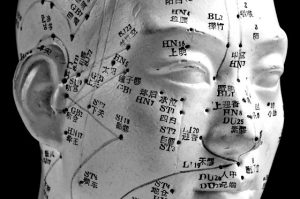10 Fun Facts About Acupuncture
 Here are 10 fun facts about acupuncture:
Here are 10 fun facts about acupuncture:
1. Ancient Origins: Acupuncture is an ancient practice, originating in China over 3,500 years ago. The earliest written records of acupuncture date back to the Huangdi Neijing (The Yellow Emperor’s Classic of Internal Medicine), which is one of the oldest medical texts in the world. Graves of ancient people have also provided early acupuncture tools made of bone or stone.
2. Needle-Free Acupuncture: Not all acupuncture involves needles. Techniques like acupressure, laser acupuncture, and moxibustion (burning herbs near the skin) also target acupuncture points without piercing the skin.
3. World Health Organization (WHO) Approval: The WHO recognizes acupuncture as an effective treatment for a wide range of conditions, including pain, allergies, stress, and digestive disorders. They gave this approval over 30 years ago.
4. Animal Acupuncture: Acupuncture is not just for humans; it’s also used in veterinary medicine. Pets like dogs, cats, and even horses can benefit from acupuncture treatments for various ailments. When critics say “its all placebo” we can remind them that animals have no expectations and acupuncture still works on them!
5. Acupuncture and Space: Astronauts have used acupuncture to help with space adaptation syndrome, also known as space sickness, which affects balance and spatial orientation. This shows that it can affect much more than just pain; in this example it’s affecting brain function.
6. Acupuncture Points: There are over 2,000 acupuncture points on the human body, which are connected by pathways called meridians. These points and meridians correspond to different organs and functions in the body. All acupuncture students memorize the location and function of about 400 points. However, experienced practitioners might only regularly use about 100.
7. Endorphin Release: One reason acupuncture is effective in pain management is that it stimulates the release of endorphins, the body’s natural painkillers. This happens most during electroacupuncture, and shows that the treatment works on the brain and spinal cord.
8. Acupuncture and Western Medicine: While acupuncture is a part of Traditional Chinese Medicine, it is increasingly integrated into Western medical practices. Many hospitals and clinics now offer acupuncture as a complementary therapy.
9. Microsystems: There are specialized forms of acupuncture that focus on specific areas of the body as microsystems. For example, auricular acupuncture focuses on the ear, where certain points correspond to various body parts and functions. There is also a microsystem on the hand for acupuncture. Other types of microsystems include reflexology, though reflexology points are not acupuncture points.
10. Electric Acupuncture: Electroacupuncture is a modern variation where a small electric current is passed between pairs of acupuncture needles. This technique is shown in extensive published research since the 1940s, to enhance the effects of traditional acupuncture. It exerts this effect mostly by supporting anti-inflammatory biology in the body, and often uses different frequencies of stimulation to improve different neurotransmitters in the brain, among other functions.
Call today to schedule a consultation! 319-341-0031
Laura Christensen, MA, MAc, LAc

